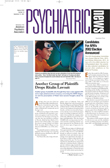The startling case of a Texas woman accused of drowning her five children while apparently suffering from postpartum psychosis highlighted the complexity of reporting such events. On one hand, the extensive media attention that the incident received is very positive as it helps inform the public and enables them to recognize and distinguish among postpartum blues, depression, and psychosis. Much of the coverage did an excellent job of describing these important mental health issues, and the public seemed eager to receive it.
But there are also risks when the subject matter is so emotional and deadlines are so short. One danger is reinforcing the common myth that individuals with mental illness are often violent. Such cases are sensationalized precisely because they are exceptional and highly infrequent, but the public is likely to be unaware of this part of the story: It becomes just another example of a “crazy person” doing a “crazy thing.” Criminal behavior and mental illness are too often confused (by the public and by attorneys), further stigmatizing those who suffer with mental illness.
In the Texas case, it seems that the psychiatric condition was quite real and in fact precipitated a tragic series of events despite treatment. Does this information help or hurt our fight to educate the public about mental illness? The answer depends, perhaps, on the delicacy with which it is handled.
What did not help was inaccurate reporting and misleading comments from professionals. One national publication made it sound as if it was commonplace for the child of a depressed mother to be taken away. This misconception could well deter women from seeking help. Another important national magazine quoted an expert as saying, “If a woman succumbs to the ‘baby blues’ as nearly half of all recent moms do, time and a little reassurance may be all that’s required to help restore emotional equilibrium.”
The erroneous belief furthered by such statements—that mental illness is a character flaw that one can fix by trying harder—is something that we have heard time and again from our patients and that frequently disrupts our ability to provide needed treatment.
A further danger is negative publicity about medications that we know work. We are all familiar with the impact that such publicity has had on people’s view of Prozac, and it will be interesting to see what happens to the image of Haldol as this story unfolds in the public eye.
Since I initially began this article, the case has had surprising little follow-up in the media. It seems we went from one extreme to the other. So the question remains: Did the brief flurry of intense coverage do more harm or more good?
I would guess it did more good. In its aftermath I have received many calls in my office about the issues in the Texas case, as have several of my colleagues. The calls have included some from former patients who needed assistance on unrelated topics and who were reminded by the Texas developments of the importance of getting help.
The public deserves to receive accurate information about mental illness on par with the information that they receive about general health issues, and for providing that I applaud some of the recent media attention.
As for the dangers of these stories, while we cannot control what the media choose to report, we must insist they do so accurately and responsibly.
As experts in the mental health field, we should be prepared for renewed media inquiries if this case ends up in a lengthy trial. I would suggest these guidelines when conducting interviews on this and other psychiatric topics:
• Remember everything you say can be printed or aired.
• For print media, ask to have the reporter read you back your quotes. If you have a high level of concern, ask to have a proof e-mailed or faxed to you before the article goes to press. These double checks may not, however, always be granted.
• Keep comments brief, accurate, and focused on the issue at hand.
• Always keep the target audience in mind, and direct your comments accordingly.
• Anticipate points that the reporter may misunderstand, and make sure the reporter understands them before the interview ends.
• Be brave and try to say “yes” when the next reporter calls. ▪

